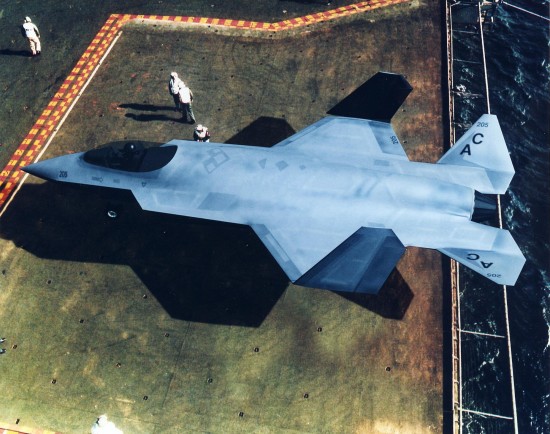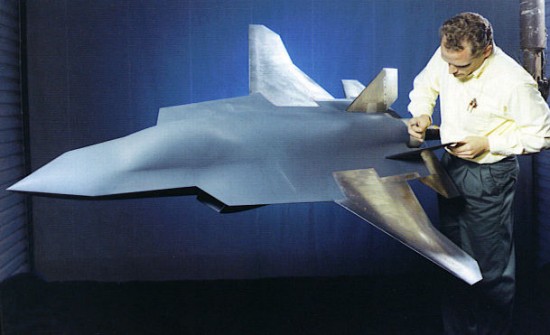Read the forum code of contact
By: - 27th December 2012 at 11:49 Permalink - Edited 1st January 1970 at 01:00
The wide-V tail is for those who don't dare to go no-tail (which no-one dares in a tactical fastmover, as of yet).
By: - 27th December 2012 at 18:36 Permalink - Edited 1st January 1970 at 01:00
Would F-23 have had to change to conventional tail as well, if it had won the competition against F-22?
does it reduce maneuverability?
By: - 27th December 2012 at 18:40 Permalink - Edited 1st January 1970 at 01:00
F-23 would have same tail yes.
There is a very common conception that YF-23 was less maneuverable, but i seem to recall that Paul Metz said it was equal to YF-22, or atleast very close.
By: - 27th December 2012 at 23:07 Permalink - Edited 1st January 1970 at 01:00
what is the stealth advantage?
i mean, these components can be built entirely of composites, so aren't/don't need to be radar reflecting anyways.
By: - 28th December 2012 at 00:50 Permalink - Edited 1st January 1970 at 01:00
Tilt
what is the stealth advantage?
i mean, these components can be built entirely of composites, so aren't/don't need to be radar reflecting anyways.
The fins would have to be canted at angle equal to others on the aircraft to be stealthy. That, along with RAM and anti-RADAR construction
By: - 28th December 2012 at 00:55 Permalink - Edited 1st January 1970 at 01:00
what is the stealth advantage?
i mean, these components can be built entirely of composites, so aren't/don't need to be radar reflecting anyways.
two surfaces in an angle to each other is good reflector for geting the signal back the same way it came from, instead of sending it in another direction. the best for stealth is to get rid of the rudder once and for all, and all depend on TVC :D
By: - 31st December 2012 at 05:22 Permalink - Edited 1st January 1970 at 01:00
A few points. One, when aircraft are being developed many tails are tested on them. I've yet to see any evidence that the McD-Northrop design switched to the four tails for the production variant, it was just one of the many variations tested.
Two, the reason the X-32 went with the conventional tail instead of the Pelikan tail was due to the design team leader being conservative, since they knew what to expect from the four tailed design more so than the Pelikan tail design; I.e., it was less risky.
Three, the YF-23 had a butterfly tail, not a Pelikan tail. The production version also had the butterfly tail.
The difference between the butterfly tail and the Pelikan tail is the butterfly tail has the standard actuator at a pinion mounting into the side of the fuselage. Where as the Pelikan tail uses a trunion mount at the trailing edge portion of the fuselage where part of the control surface is also horizontal on the trailing edge behind the trunion mount. You can see this kind of mounting used on the F-35 and T-50 PAK-FA stabilators. It handles the loads better by distributing them more which should, theoretically, lead to a lower weight solution.

Posts: 306
By: J-31 Burrito - 27th December 2012 at 09:06
based on a thread here
i noticed that many companies attempted a pelikan tail but opted against it going to a conventional 4 tail solution. so far the only problem cited is weight but it seems the advantages are high.. especially in the stealth aspect
for example:
McD's JAST started with a pelikan tail

later switched to a conventional tail

Boink started with a pelikan tail
http://www.secretprojects.co.uk/forum/index.php/topic,2121.msg18031.html#msg18031
later switched to a conventional tail
